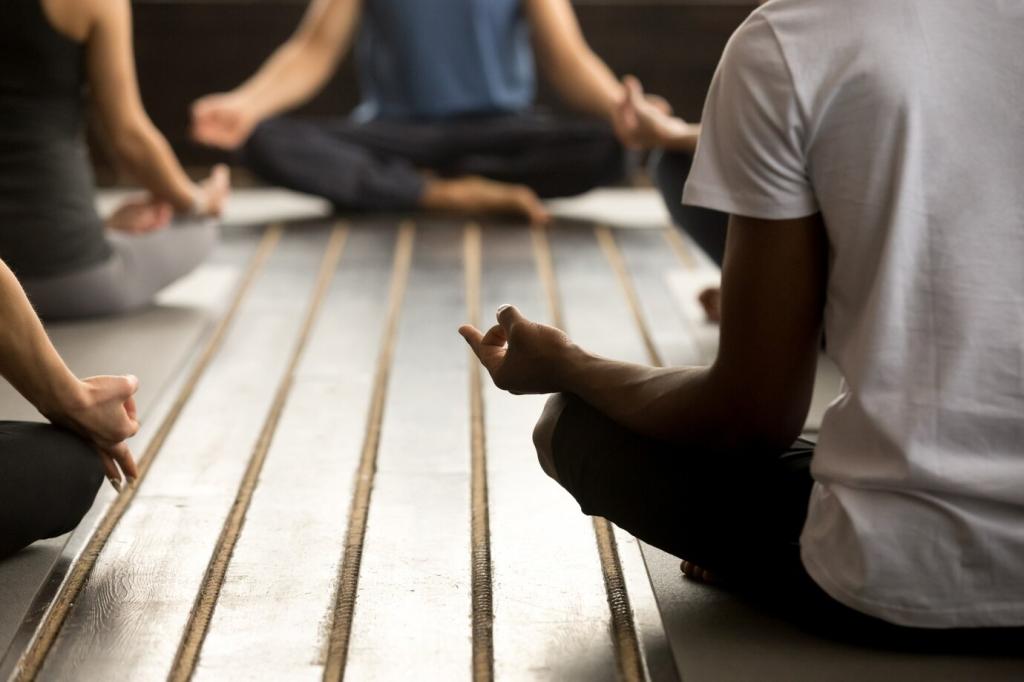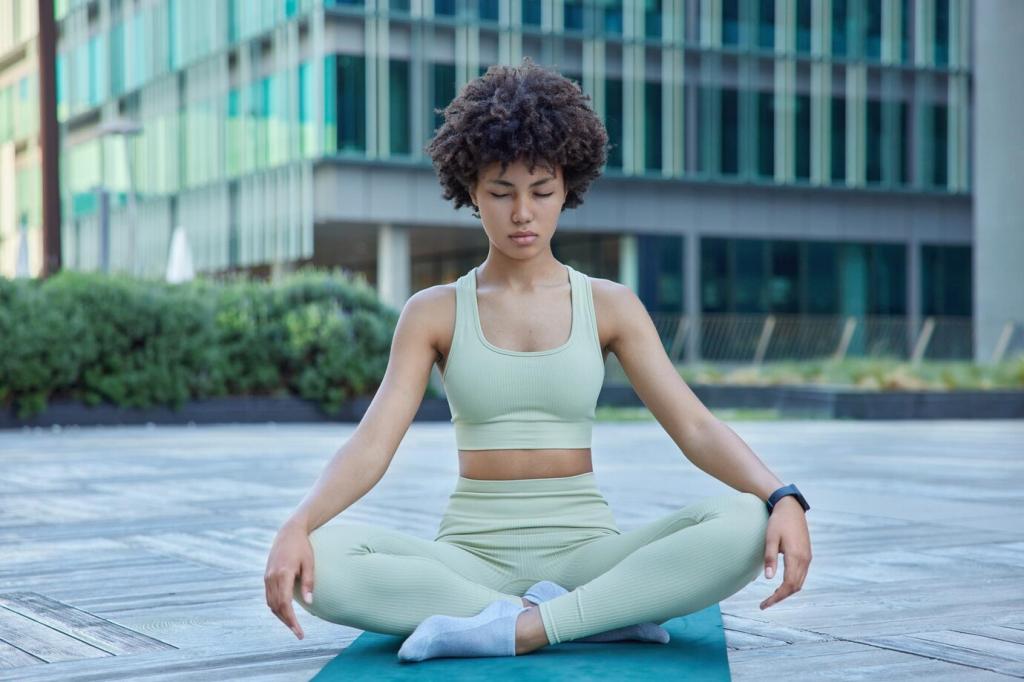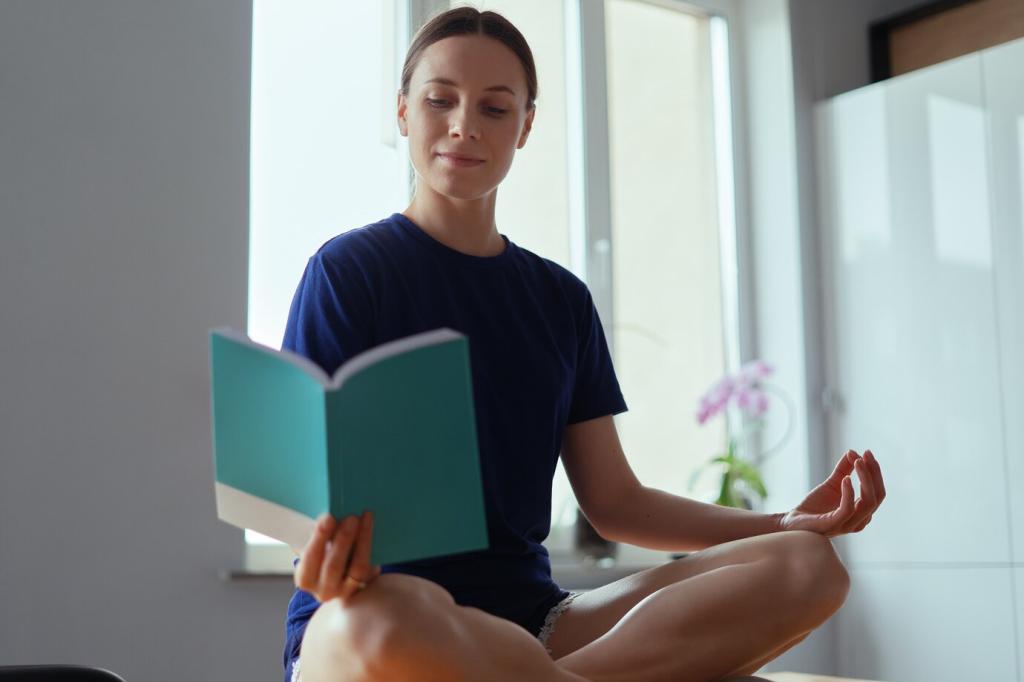A Gentle 10‑Minute Flow You Can Start Today
Begin with three quiet breaths. Circle wrists, elbows, shoulders, hips, knees, and ankles slowly. Brush down the arms and legs to awaken sensation. Feel warmth gather in the palms. Share which joint felt surprisingly tight before it softened.
A Gentle 10‑Minute Flow You Can Start Today
Move in spirals from the waist, letting arms follow like ribbons. Shift weight heel‑to‑heel with soft knees, palms floating as if separating clouds. Keep breath steady and eyes gentle. Tell us whether spirals eased your lower back or shoulders today.








